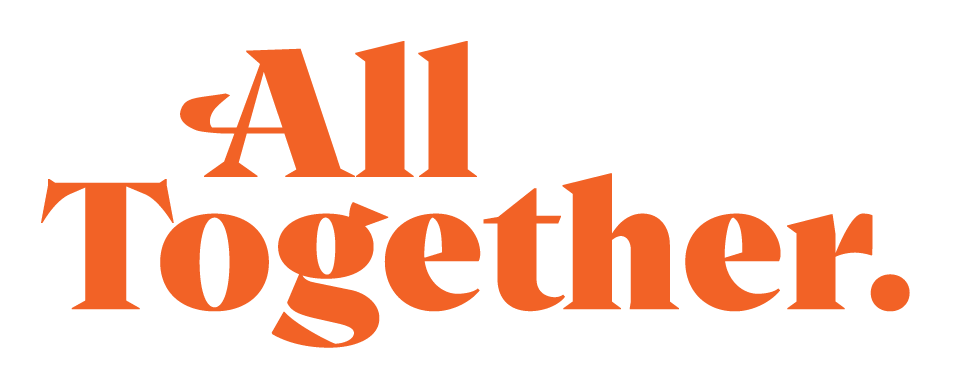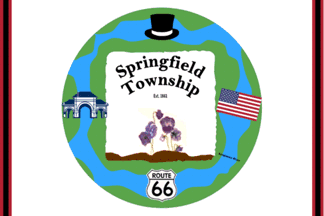Raise a Flag for Your City
We've previously shared how a strong logo can build a city's brand, but what about its flag? Often overlooked, a well-designed flag is a crucial element of your city's visual identity, capable of boosting the local economy, bringing national (or even international!) acclaim, and inspiring joy for residents and visitors alike.
In this post, we'll explore the qualities of a great city flag, share the surprising benefits it can bring, and showcase some stellar (and some not-so-stellar) examples from cities across the US.
The Rise of the City Flag
In 2022, the North American Vexillological Association (NAVA) conducted a survey of 312 city flags, sparking a surge in redesign efforts for cities with lower rankings. City and state flag design contests are receiving more entries than ever, signaling that communities are increasingly recognizing the importance of flags in representing their unique character. This rise in interest highlights how flags can foster civic pride, unite residents, and create a cohesive, recognizable identity for a city—something far more than just a piece of colorful fabric.
What Makes a Well-Designed Flag?
Not all flags are created equal. A truly excellent city flag has a few key traits, and Ted Kaye, author of “Good” Flag, “Bad” Flag, and NAVA’s secretary, is one of the leading voices on the topic. According to Kaye, there are five fundamental qualities that all well-designed flags share:
Simplicity - It should be simple enough that you can draw it from memory.
Meaningful symbolism - Choose relevant colors, patterns, and emblems.
Few colors - Ideally, use primary colors for contrast.
No lettering or seals - Keep it visual. Words clutter the design.
Distinctiveness - Avoid copying other flags. Be original!
Our Take on NAVA’s List
4 Flags That Make Us Proud
From the survey results, we’ve selected flags based on their adherence to NAVA’s standards and our design sensibilities. What we admire about the first list of flags is their bold symbolism, minimal color schemes, and relative simplicity—traits that make them meaningful representations of their cities.
Lincoln, NE
Designed by immigrant artist Ed Mejia, Lincoln's new city flag symbolizes the city's interconnectedness and bright future with its art deco-inspired lines, central beacon, and colors depicting its landscape and natural resources.
Reno, NV
Reno's current flag, designed by Tucker Stosic, symbolically incorporates the city's geography and history, with elements like the blue of Nevada, silver for the mining boom, the Truckee River, the Sierra Nevada mountains, and a star representing the iconic Reno Arch.
Topeka, KS
Topeka's flag masterfully blends historical symbolism, reflecting its "Golden City" nickname, agricultural heritage, commitment to justice, and status as the Kansas state capital through its colors, a sunflower with nine petals, and a star representing "Ad Astra Per Aspera,” meaning “To the stars through difficulty” in Latin.
Tulsa, OK
Tulsa's flag is notable for its modern design, which features a blue field representing the Arkansas River, a gold line for the city's oil boom, and a shield symbolizing Native American heritage.
4 Flags That Need a Refresh
We also looked at the survey’s lowest-rated flags. No disrespect to these cities, but their flags could use a serious redesign (hit us up!). Too often, we see flags bogged down by text, overly complex illustrations, or just plain old pasted-on seals. Less is more when it comes to flag design!
City Flag as an Extension of Community and Storytelling
We couldn’t agree more with Kaye’s principles for flags. But we would emphasize that they should also serve as extensions of community pride and identity. A well-designed flag doesn’t just look good; it’s embraced and celebrated by the people it represents, sparking a connection with both residents and visitors. When designed thoughtfully, a flag becomes a means for storytelling, encapsulating a city’s history, values, and unique spirit.
While not all of these cities were featured among NAVA’s highest-ranked flags in 2022, these flags are worth highlighting for their design process and subsequent popularity:
We might be a little biased since Chicago is our home base, but let's be real: few cities boast both a truly great flag design and the passionate civic pride that Chicagoans have for theirs. It’s a flag so beloved that you’ll find it tattooed on arms, incorporated into local business logos, and on every type of paraphernalia imaginable. This iconic symbol was the result of a 1917 design competition, with Wallace Rice, a former Art Institute of Chicago lecturer on flag design, crafting the winning entry. The flag features two blue stripes representing our waterways, three white stripes for our neighborhoods, and four red six-pointed stars, each a tribute to a pivotal moment in Chicago's history: Fort Dearborn, the Great Chicago Fire, the 1893 World's Fair, and the 1933-34 World's Fair. Its simple design and powerful symbolism resonate deeply with Chicagoans, and it's a perfect example of a flag that has become an integral part of the city's identity.
Designed in 1937 by local artist Cecil McAlister, the Wichita flag initially didn’t gain widespread popularity. Its design, featuring a sunburst symbolizing the city’s aviation history and a central emblem reflecting Wichita’s heritage, was embraced more fully in recent years, thanks in part to the efforts of the Wichita Regional Chamber of Commerce’s communications team. Their work in promoting the flag has helped it become a powerful symbol of civic pride. What we admire about the Wichita flag is how its meaningful design has evolved into a beloved representation of the city's spirit, history, and identity.
Pocatello’s flag is a testament to the power of public input. The redesigned flag came to life after the city was criticized for having the "worst" flag in North America during a 2015 TED talk by Roman Mars. A public-driven design contest attracted 709 submissions from 26 countries. The final flag incorporates key symbols of Pocatello’s identity: three mountain peaks (Scout Mountain, Kinport Peak, and Chinese Peak), a compass rose representing the city’s historical role in transportation and trade, and colors that reflect its agricultural roots and natural beauty. We admire how this flag seamlessly blends meaningful symbolism with community involvement, creating a design that resonates deeply with the people of Pocatello. Officially raised in 2017, the flag stands as a symbol of hope, pride, and the collective spirit of the city.
In 2024, the City of Evanston adopted a new flag designed by 7-year-old Bernie Allen-Harrah, a first-grader, as part of Mayor Daniel Biss' youth flag redesign contest. The contest, initiated by art teacher Bill Simos, saw over 200 submissions from K-12 students. Nine finalists were selected and mentored by professional designers to refine their work. Bernie's flag was ultimately chosen for its unique blend of symbolism and artistic appeal. It features a green background representing Evanston's tree canopy, a white star symbolizing the Grosse Point Lighthouse, a blue stripe for Lake Michigan, and a golden band for the beaches adjacent to the lake. It’s a refreshing design that connects the city's environment with its community in a meaningful way while also giving young people a platform to shape their city’s identity.
What stands out about Milwaukee’s flag is the way it turned a low-ranking design into a passionate, community-driven initiative. Milwaukee's original flag, adopted in 1954, saw limited use and was largely unknown. Following a 2004 NAVA ranking that placed Milwaukee's flag among the worst in the nation, a redesign process was launched. Led by designer Steve Kodis and the non-profit Greater Together, this initiative engaged residents through over 1,000 design submissions, almost a dozen community workshops, and focused youth engagement. A panel of judges narrowed down the submissions to five finalists, with the public ultimately selecting "Sunrise Over the Lake" by Robert Lenz. While widely celebrated, this “People’s Flag” still awaits official adoption by the city council.
As the trend of city and state flag design contests continues to grow, it’s clear that flags are becoming an integral part of how communities express their identity. Whether through new designs or the revitalization of existing ones, flags are an essential element in shaping how cities are perceived internally and externally.
By engaging residents in the design process, cities are not only creating powerful symbols but also building stronger, more connected communities. As more cities embrace the importance of a thoughtful, well-crafted flag, we can expect to see even more creative designs that truly reflect the spirit of the places they represent.
Final Thoughts
When done right, your city flag can be a beacon of pride, a storytelling device, and an unforgettable image that attracts attention from beyond your borders. So, the next time you think about your city’s brand, consider your flag as an integral part of your municipal identity. With the right design, your flag could become a lasting symbol that connects your city’s past, present, and future.
FAQs
What’s the difference between a city logo and a city flag?
A city logo is typically a small, detailed design representing a city's brand used for marketing and communication. On the other hand, a flag serves as a larger, symbolic representation of the city's identity and values, meant to evoke a sense of pride and unity among residents.
Can we hire you for flag design?
Absolutely! We'd love to help your city create a flag that truly represents its unique character and spirit. Contact us to discuss your project.













